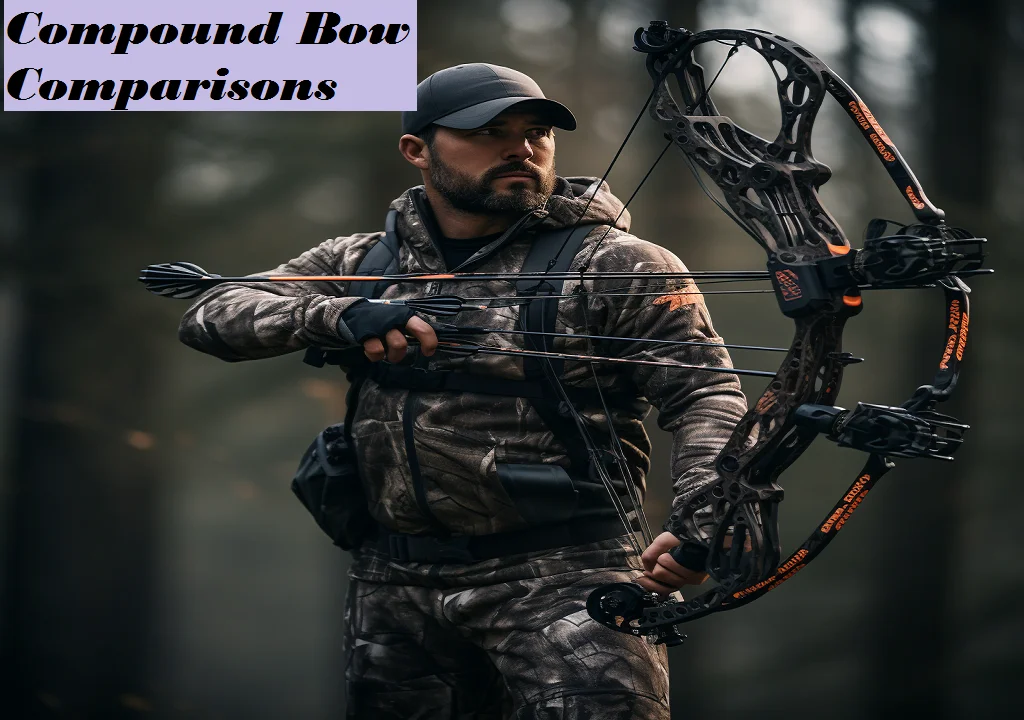
Ah, the thrill of releasing an arrow and watching it fly! Archery is as old as civilization itself, and its tools have been perfected over millennia. Today, we’ll unravel the marvel that is the compound bow, delve deep into its intricacies, and guide you to the perfect bow.
Table of Contents
Traditional bows like longbows and recurves are simplicity at its finest – a bendy arc and a string. The compound bow, however? It’s where tradition meets technology.
Holless Wilbur Allen, in the 1960s, reinvented the wheel. By incorporating pulleys into the design, he made archery accessible to many, without compromising on power.
Constructed mainly from aluminum or carbon fiber, the riser is the non-bendy middle part. It provides stability and is where most of the other components attach.
These are the bendy parts. Shorter than their counterparts in recurves, they store all the energy. Modern limbs are made from composite materials, making them robust and reliable.
This pulley system, generally at the end of the limbs, is the compound bow‘s defining feature. There are multiple types – single cams, hybrid cams, twin cams. Each has its perks, influencing draw cycle and speed.
Established in 1931, Hoyt has been at the forefront of archery innovations. They’re known for their durability and high-end designs.
Founded in the 1990s, Mathews quickly became a market leader. Their bows are light, fast, and have a smooth draw cycle.
With patented technologies and diverse offerings, Bowtech bows cater to both beginners and pros.
Precision Shooting Equipment (PSE) is known for its speed. Their bows are often the go-to for those looking for a quick shot.
While many bows serve both purposes, some are specialized. Target bows focus on accuracy over long distances, while hunting bows prioritize power and speed for a quick kill.
The bow should fit you like a glove. Measure your draw length, and pick a weight you can comfortably pull back.
From budget-friendly to bank-busters, there’s a bow for every price range. Remember, a higher price doesn’t always mean better quality.
Inspect your bow frequently. Check for frayed strings, cracks, and ensure all parts are tightened.
Store in a cool, dry place. Use bow cases for added protection.
Over time, strings wear out. Replace them periodically to maintain peak performance.
From self-adjusting bows to smart technology integrations, the future looks promising.
Brands are now looking into sustainable materials and ethical manufacturing processes, ensuring that the sport remains green.
Compound Bow Comparisons: The compound bow, a marvel of modern archery, offers a blend of power and precision. With brands pushing the envelope and innovations on the horizon, there’s no better time to embark on your archery journey. Research, practice, and most importantly, enjoy the process.
Gun owners regularly hear that maintaining their firearm is essential, but many still wonder exactly…
When handling any firearm whether it’s a hunting rifle, shotgun, handgun, or even a crossbow—reliability…
Jerking the trigger is one of the most common accuracy problems pistol shooters face. Whether…
Keeping your handgun clean is one of the most important responsibilities you have as a…
Archery has evolved dramatically over thousands of years, yet one debate continues to spark curiosity…
When you’re setting up a long-range rifle scope, one of the most important decisions you’ll…
This website uses cookies.